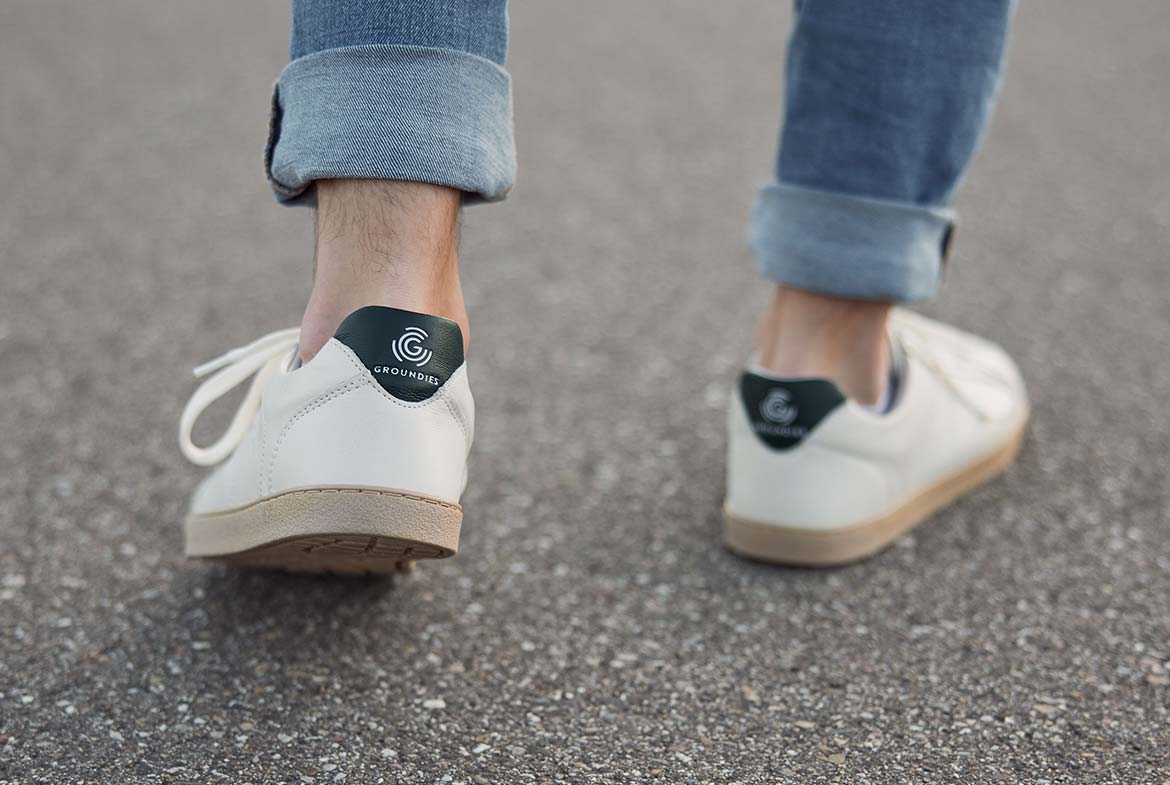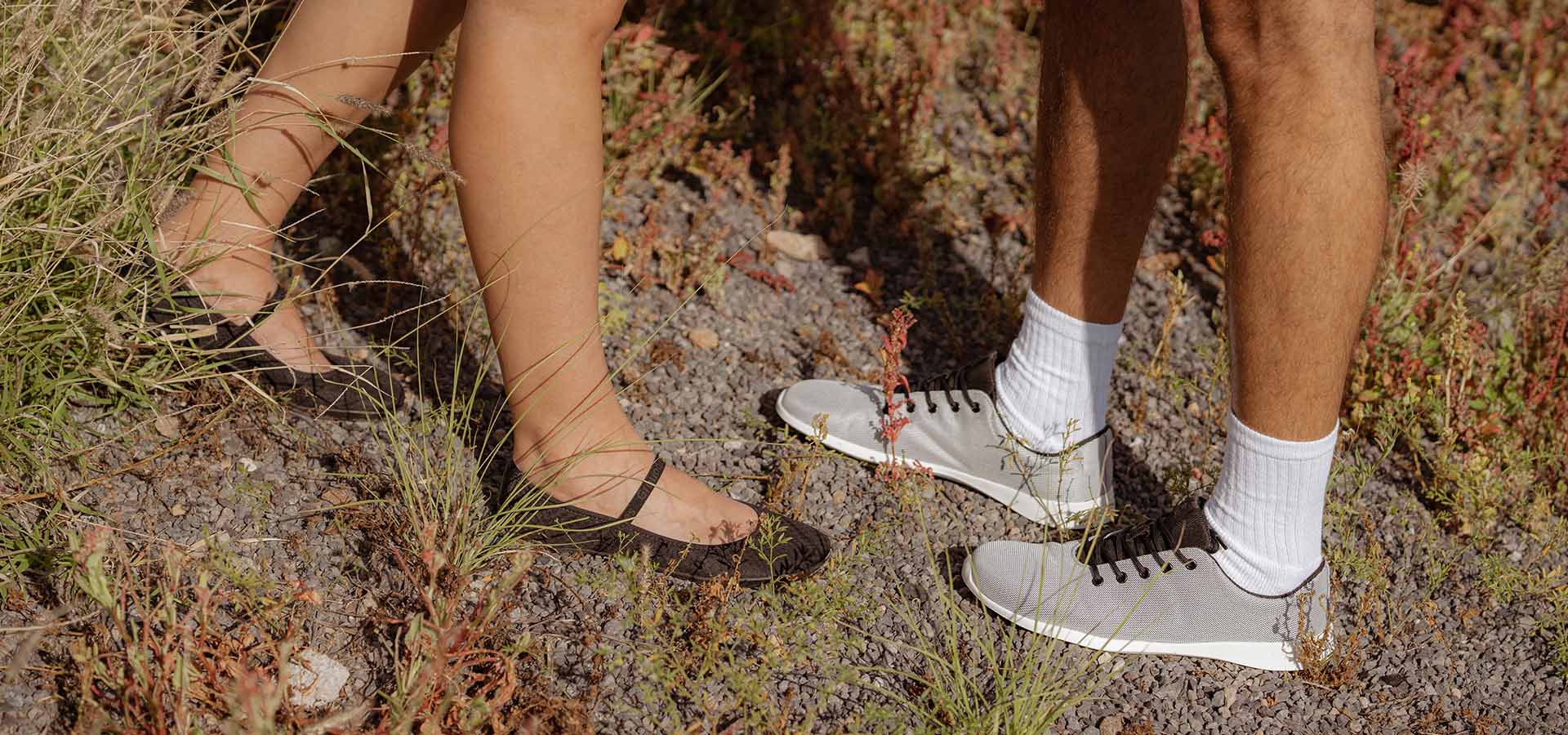Reduce stress through walking barefoot - what effects does walking barefoot have on our nervous system?
Our nervous system is a complex network of different "messengers" and consists of several billion nerve cells called neurons. In our brain alone, there are around 100 billion. Each nerve cell consists of a body and various projections that, like antennae, receive and transmit signals in the body. However, if our life is upside down or if we are experiencing strong inner tension, our nervous system is also confronted with extreme challenges: When our system is in a state of emergency, restlessness and sleep or concentration problems emerge This is why it is especially important in these instances to at least partially restore the body's inner stability and security. Grounding is an important keyword here, and in the truest sense of the word: In order to be able to securely situate itself in time and space, the body needs ground contact. This happens first and foremost through our feet. And by walking barefoot.
Walking barefoot stimulates the nervous system
Our nervous system's sensitive nerve points are connected to the entire body via energy pathways (called meridians). However, the pathway to nerve endings may be blocked by stress hormones. Walking barefoot can stimulate reflex zones, which has a lasting effect on our nervous system and organs. Each toe and area of the foot represents a specific organ.

Walking barefoot stimulates reflex zones - which toe represents which organ?
Reflexology assumes that all parts of the body are interconnected. The human body is reflected above all in the foot, which resembles an inner map of the former. Reflexology's motto could be "Show me your foot and I'll tell you who you are." The power of walking barefoot: The targeted pressure massage on the foot can solve the body's physical and mental afflictions. One simple reflexology that also does not cost anything is walking barefoot. With this, the importance of the big toe, which is mostly cramped in tight shoes and cannot be straightened, is especially apparent. Since it is directly connected to the brain, the big toe has a significant influence on our nervous system. But other toes and areas of the foot also represent important organs that are stimulated by walking barefoot:
- Big toe: the brain's reflex zone
- Second and third toe: the eyes' reflex zones
- Balls: lungs, heart, and thyroid gland
- Midfoot sole: internal organs, including kidney, liver and intestine
Earthing, grounding, down to earth: our body needs grounding
Earthing is directly connecting the body with the surface of the earth. This can be walking barefoot outdoors or sitting or lying directly on the ground. The basic idea behind earthing is that the body's electricity is positively charged. In addition to natural charges, i.e. electrostatic charges, there are also many artificial, electric fields. These include, for example, cell phones, computers and Wi-Fi. While walking barefoot used to be the norm, current scientific research suggests that it is the constant wearing of shoes, the disconnection caused by artificial soles, and the general lack of natural earthing (also known as electron deficiency syndrome) that may have a lot to do with the emergence of modern diseases. This is because we unconsciously live in a kind of battery: While the free radicals in our body are positively charged, the Earth's surface is negative. However, direct barefoot contact with the Earth neutralizes these free radicals, which is why earthing is also said to be effective against chronic inflammation. So with this mind, take your shoes off and go barefoot. Or to quote cardiologist Dr. Stephen Sinatra* in the documentary "Down to Earth," "Grounding literally means putting your bare feet on the ground. When you do that, you are in contact with Mother Earth. It's like a handful of antioxidants that we receive through our feet."

From the foot to the brain, walking barefoot calms the nervous system
Our nervous system is divided into a central nervous system, a peripheral nervous system, a somatic nervous system and an autonomic nervous system. While the peripheral nervous system is responsible for nerves in muscles, eyes and ears, among other body parts, the somatic and autonomic nervous systems concern themselves with the control of conscious and involuntary processes, respectively. The central nervous system, on the other hand, has a direct line to our brain. It is precisely the activation of the autonomic nervous system that is part of stress reactions that occur due to stressful events. The purpose of this stress reaction is to prepare the body for danger and the threat of a confrontation. Here, walking barefoot can help calm our autonomic nervous system. Stimulating the feet with various "ground stimuli," such as walking slowly in a meadow, in the woods, or on rounded stones, disrupts the predominance of the sympathetic nervous system. The body is brought out of a state of excitement, the nerves can relax again and stress is relieved. At the same time, 30 minutes of walking barefoot a day is enough to support a variety of processes in our body.















